15 Surprising Facts about Wales
I recently spent nearly two months traveling around the small country of Wales. I was pet sitting the entire way, looking after various dogs and cats all over the place. Those pet sits took me to the capital, Cardiff; a small coastal town on the south coast called Porthcawl; and and even tinier town in northern Wales called Rhuddlan.
Not surprisingly, I learned a lot about Wales during my adventures. Last week I published my Introduction to Wales. In this article, I share 15 of the most interesting things I learned about this lovely, hilly country…

1. Wales is officially a bilingual country
Wales is officially a bilingual country, with Welsh and English. In order to preserve the Welsh language, the government has instituted a serious bi-lingual signage policy. So double signs in Welsh and English are found all over. In supermarkets, on road signs, public buildings and heritage sites. I saw them everywhere during my two months in Wales.
In reality, less than 20% of the population still speak Welsh. Most of them are in the north and interior rural regions.
A bit surprisingly, many people in southern Wales are rather irritated at the government for all the bilingual signs. Since virtually nobody speaks Welsh throughout most of the country, people feel it was a massive waste of tax-payer money. Hopefully people in more Welsh-speaking areas appreciate the effort.
2. In Welsh the country is called Cymru
Speaking of the Welsh language, in Welsh the country is actually called ‘Cymru.’
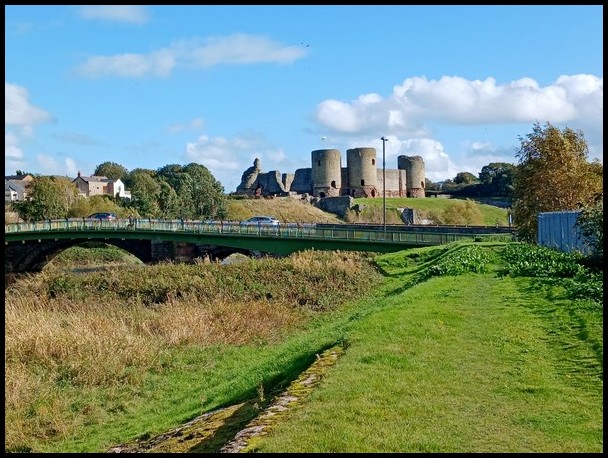
3. Wales has the most castles per square mile in world
Here’s an interesting fact about Wales that really surprised me. Considering all the European countries with famous castles, along with England and Scotland, I certainly would have guessed that some other country held this title.
But little humble Wales has more than 600 castles scattered about its meager 8000 square miles. The castles are from many different centuries, built in many different styles and sizes. They’re also in varying states of preservation, from mere ruins to fully-preserved and functioning castles.
During my two months traveling around Wales, I only got to visit two of those 600+ castles and gaze upon a few others from afar. I visited stunning, well-intact Cardiff Castle and semi-ruined Rhuddlan Castle in the far north. I sure wish I could have seen more!

4. This cool Red Dragon is the symbol of Wales
This super cool & stylish red dragon is certainly one of the best national symbols that I’ve come across in the world. It features on the Welsh flag and is also found all over the place in Wales.
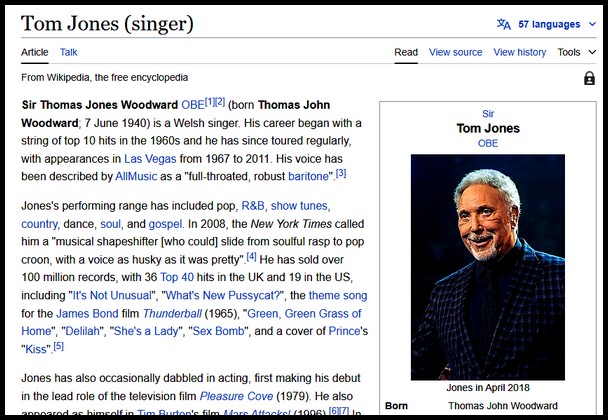
5. Tom Jones is from Wales
Nowadays, the internationally renowned singer Tom Jones may not be commonly known by today’s youth. But hey, many young people don’t even know who Madonna is for heck’s sake!
But for many generations, from at least my parent’s era, Tom Jones was a household name, right up there with Elvis Presley and the Beatles. He was most famous in the 1960s.
I’m not even that familiar with his music, though he was around while I was a young kid. But I do remember that he was considered a very handsome and sexy lady’s man with a flashy smile and sexy clothes. He played for more than 40 years at Las Vegas, from 1967-2011, but was probably most famously known for his female fans randomly throwing their panties at him while he was performing.
In any event, Tom Jones is one of Wales’ most internationally-famous stars. Incidentally, he’s still alive and singing! He’s also been dubbed Sir Tom Jones by the British Royal Crown for his contributions to UK.

6. World’s Biggest Elvis Presley Festival in Porthcawl, Wales
Speaking of Elvis…
As wacky as it seems, the world’s biggest Elvis Presley Festival is held in Porthcawl, a tiny coastal resort town in southern Wales. I only know about it because I just happened to be pet sitting in Porthcawl the very weekend that the annual festival descended on the town.
In 2024, the festival celebrated its 20th year in Porthcawl. It’s been growing in size and fame during the past two decades and now a whopping 40,000 people arrive in little Porthcawl over one weekend in September.
There are three days of Elvis contests with dozens of contestants, hundreds of people dressed up as Elvis (both contestants and spectators) and a dozen or more bars, restaurants and other local businesses participating.
I’m not particularly an Elvis fan, but since I was in Porthcawl at the time, I did mosey on through briefly to see all the crowds and snap a few photos of Elvis wanna be-s. They sure looked like they were having fun!
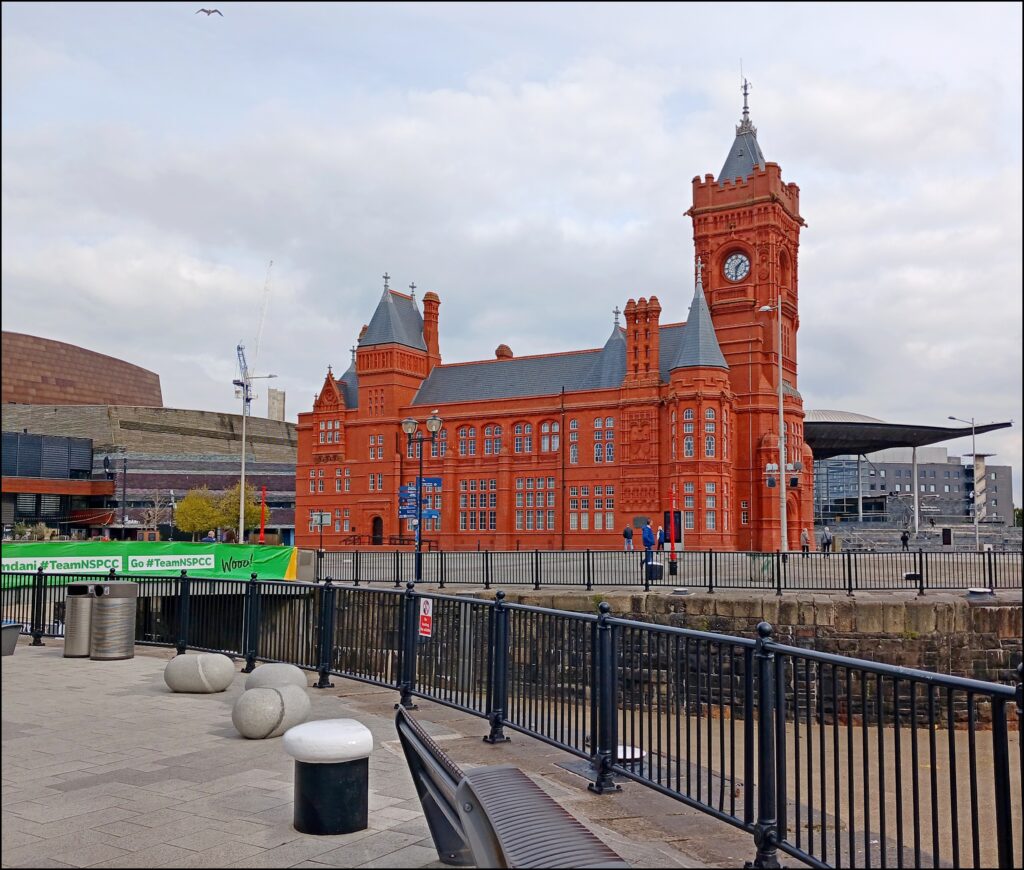
7. Cardiff was once the world’s biggest and most important ports
As the industrial revolution took off in the mid-late 1800s in the UK, and huge deposits of very high-quality coal was unearthed in southern Wales’ valleys, Wales suddenly became an important part of the success of industry.
Welsh coal was declared to be the best quality steam coal, so was highly sought after to generate electricity, heat homes, run steam trains, factories and all sorts of machinery. Wales began growing in fame and wealth.
Luckily for Cardiff, the city lies on the southeastern shores of Wales, just south of the coal valleys. It was natural to send all the coal down to Cardiff Port to ship it out all over the world. Thus Cardiff became the most important and busiest port in the world, with the largest exports measured in tonnage.
In 1987, Cardiff exported 16 million tons of coal. In 1914, it exported more than 24 million tons.
It was a relatively short lived run, lasting from the late 1800s until WWI, when a huge percentage of young Welsh men were sent off to war.
8. The world’s first Million Dollar business deal took place in Cardiff
The Welsh coal industry was so prolific that it lead to the world’s very first Million Dollar business deal (actually, the first Million British Pound deal), which took place in 1907.
The Million Pound check was signed at Cardiff Port’s Coal Exchange. That once all-important building still stands at Cardiff Bay.
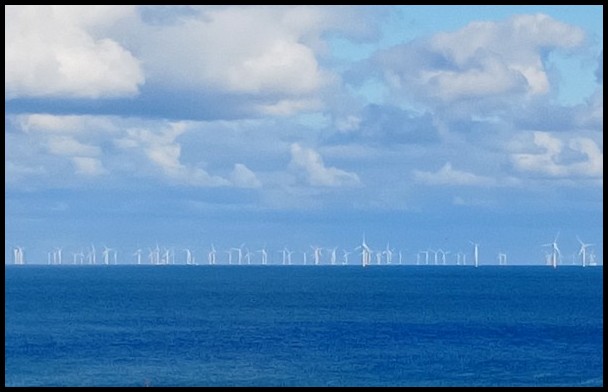
9. Today Wales has several huge offshore windmill farms
In September of this year, I took a train from Cardiff, in southern Wales, up to the north coast. As we moved along the north coast, I looked out to sea and saw something very curious waaayyyy out on the horizon of the Irish Sea. I had to strain my eyes and use my imagination to figure out what the heck I was observing.
Eventually, I realized that I was gazing at a virtual forest of huge modern windmills! They stretched out across the horizon for miles. There must have been hundreds of them, I reckoned.
After arriving at my destination, a pet sit in the tiny town of Rhuddlan, I asked around. It turns out that the windmill farm I saw is called the Rhyl Flats Offshore Wind Farm. There are 160 windmills.
It started producing power in 2009 and nowproduces enough clean energy annually to power 70,000 households! That’s equivalent to cutting down on 1.7 million tonnes of CO2 emissions a year.
Rhyl Flats is not the only large offshore wind farm in Wales, though. There are several others, as well as training schools for offshore windmill maintenance, power facilities, admin offices, visitor centers and onshore wind farms. It’s already an entire industry!
More over, throughout UK there are dozens of offshore wind farms.
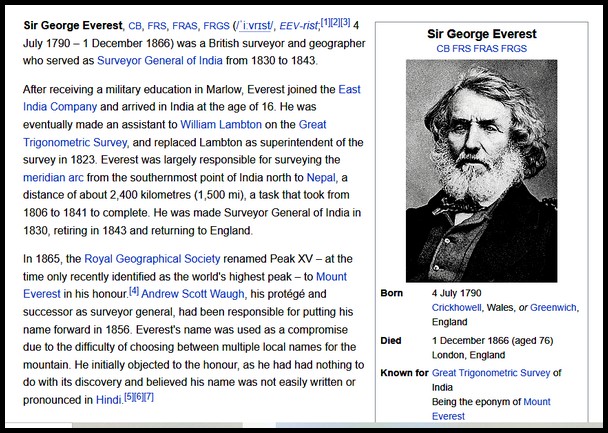
10. Mt. Everest was named after a Welshman
Up through the mid 1800s there was great debate about which Himalayan mountain was the highest in the world. When the official survey team of India, composed of both Indian and British mathematicians and surveyors, conclusively proved that this particular mountain was indeed the highest on the planet, the British Royal Geographic Society decided to name it Mt. Everest in honor of Welshman, Colonel George Everest, former Surveyor General of India.
Tibetans already called the mountain Chomolungma, while Nepalese called it Sagaramath. But the British considered those names ‘not intelligible to civilized man’ and gave it their own name. Prior to that, the British referred to it as Mountain XV.
11. Wales is famous for slate
Along with coal, Wales is famous for that super hard black stone, slate. Modern architects in Wales often use slate to honor the country’s natural resources. One excellent example is the Welsh Parliament building in Cardiff, referred to in Welsh as Senod.

12. Wales is less than 10% the size of England
While England takes up nearly 60% of the island of Great Britain, tiny Wales occupies less than 10%, while Scotland up north takes up the remaining 30% of land.
Wales’ land area amounts to 8023 sqaare miles / 20,779 square km. That’s a little bigger than New Jersey (7354), but a little smaller than Massachusetts (10,555 sq miles).
Even so, Wales is not the smallest of four countries making up UK. The country ofNorthern Ireland, situated at the north end of the island of Ireland, is 5456 sq miles. That’s roughly the size of Connecticut (5543 sq miles).
13. Corgi dogs originated in Wales
Here’s another fact I was surprised to learn. I had assumed that Queen Elizabeth and the British Royal family’s favorite dog breed would have originated in England.
But as it turns out, Corgis came from Wales, where despite their small size, they were sheep herders.
14. Wales has the world’s 2nd longest town name
A tiny town in northern Wales is famed as having the world’s 2nd longest town name.
It is Llanfairpwllgwyngyllgogerychwyrndrobwll-llantysiliogogogoch.
That means ‘the Church of St Mary in the hollow of the white hazel near the rapid whirlpool.’
The absolute longest town name is in New Zealand.
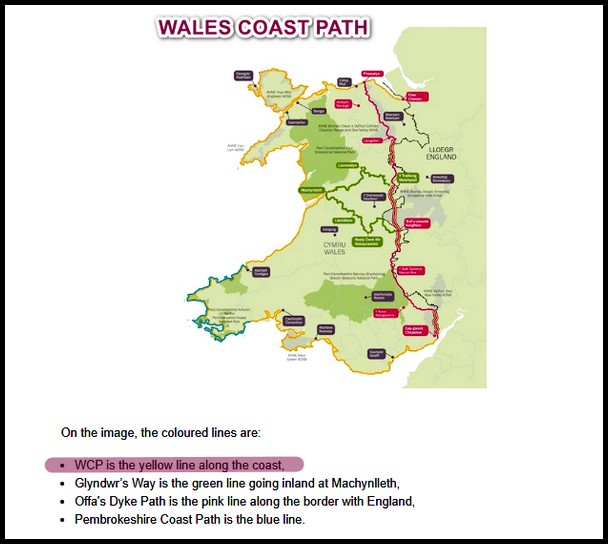
15. Wales is the only country with a coastal walkway following its entire coast
Wales is surrounded by seas on its southern, western and northern borders. Only to the east does Wales have a land border, and that’s with England.
The country’s total coastline measures 2700 km / 1680 miles, which includes all the ins and outs of its many bays, small offshore islands and the large northwestern island of Anglesey.
The famous Wales Coast Path runs for 1400 / 870 miles, following the entire coast. It’s the longest coastal path in the world and the only trail that follows the entire coastline of a country.
Wales Coast Path also links up with other long trails that go inland through Wales and Offa’s Dyke Path, which follows the border between Wales and England. Hikers who walk both trails will walk circumnavigate the entire country. That’s an additional 285 km / 177 miles.
==============================
You might also enjoy:
Ten Unusual English Words in Common Use in Scotland
==============================






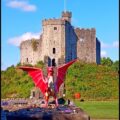


 Hi! I'm Lash, an American nomadic world traveler who's been traveling solo since 1998. I’m passionate about traveling the world nomadically and then sharing it all with you. I hope to inspire you to travel the world, to entertain you with tales from the road, and to help you reach your travel dreams. Welcome!
Hi! I'm Lash, an American nomadic world traveler who's been traveling solo since 1998. I’m passionate about traveling the world nomadically and then sharing it all with you. I hope to inspire you to travel the world, to entertain you with tales from the road, and to help you reach your travel dreams. Welcome! 




1 pings
11 Things Ireland is Famous For - LashWorldTour
2024/11/20 at 12:48 am (UTC 8) Link to this comment
[…] « 15 Surprising Facts about Wales […]